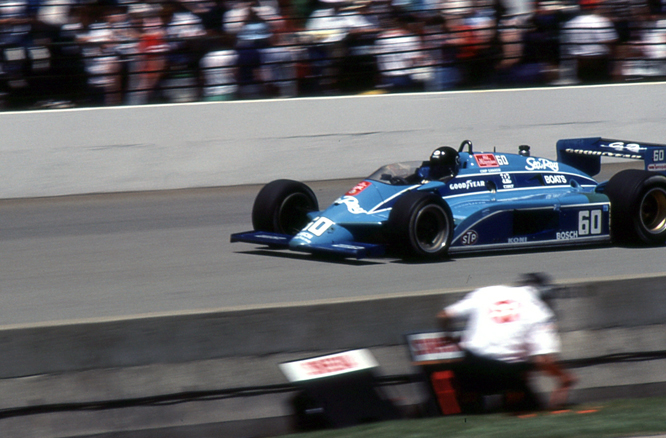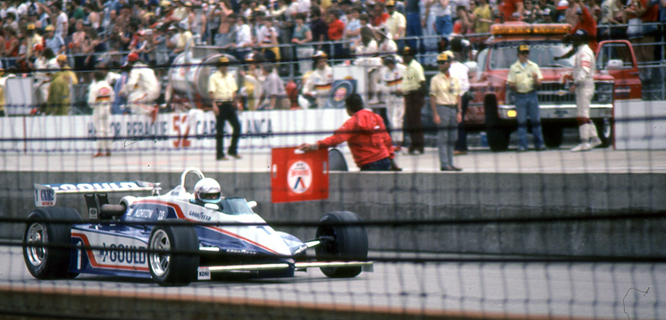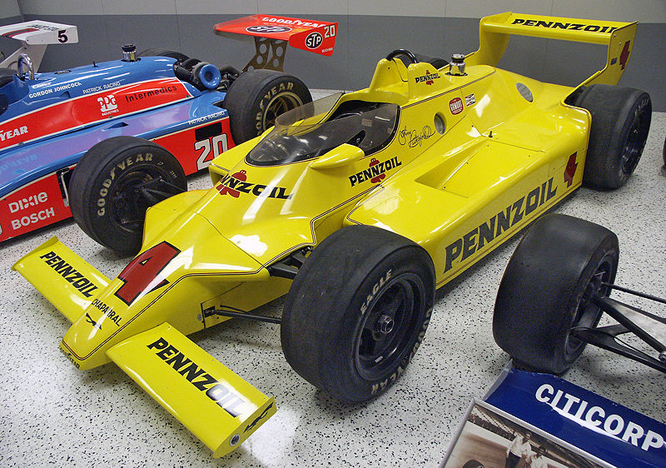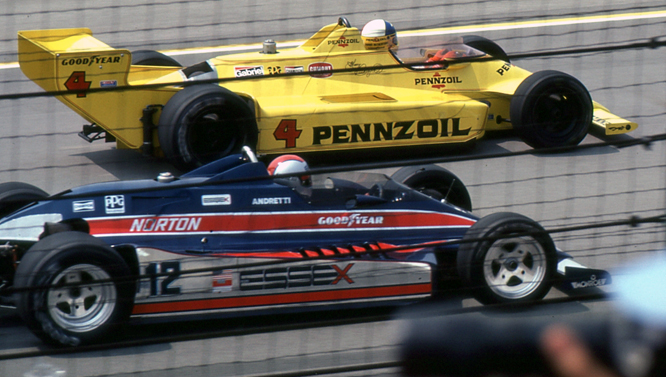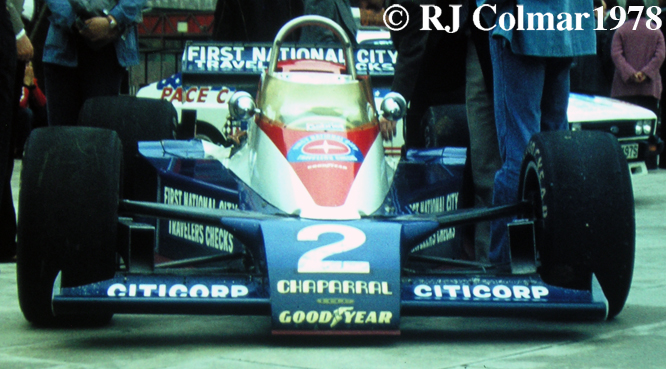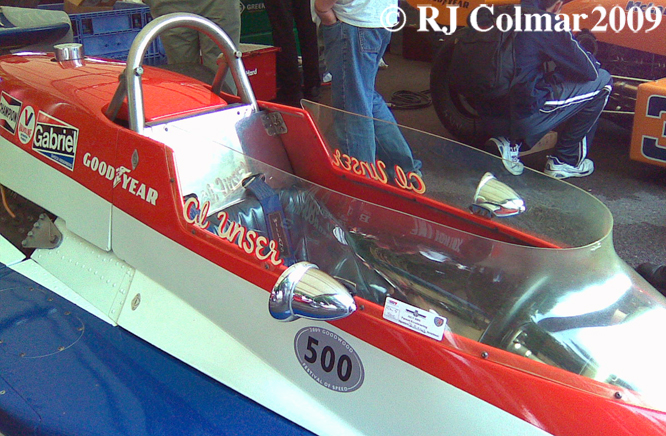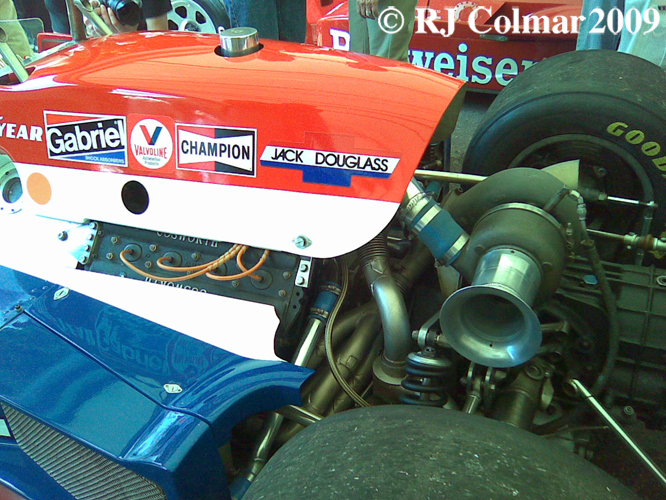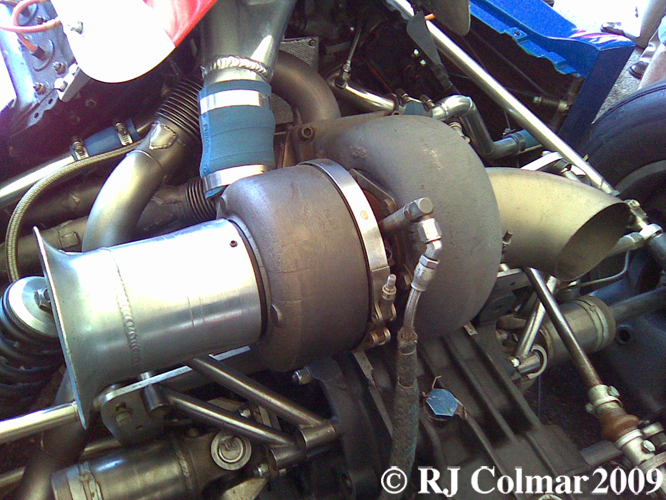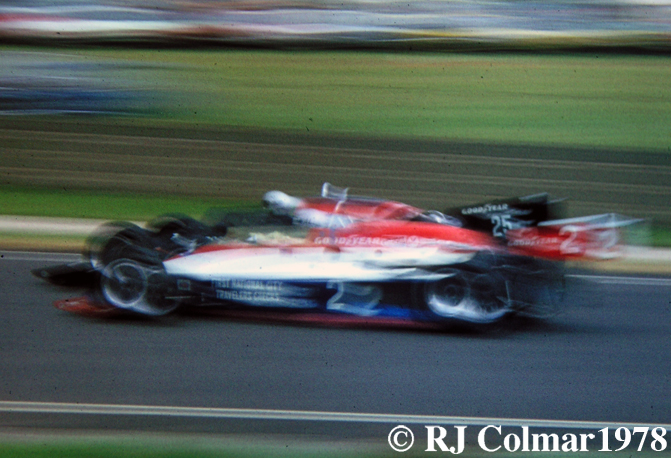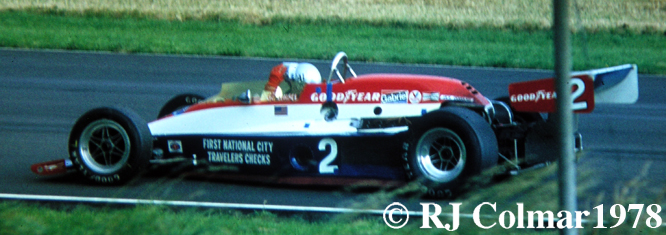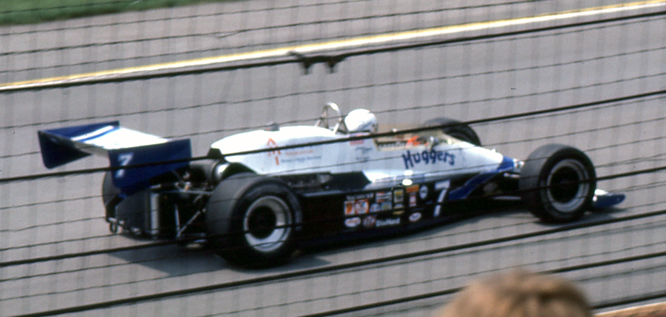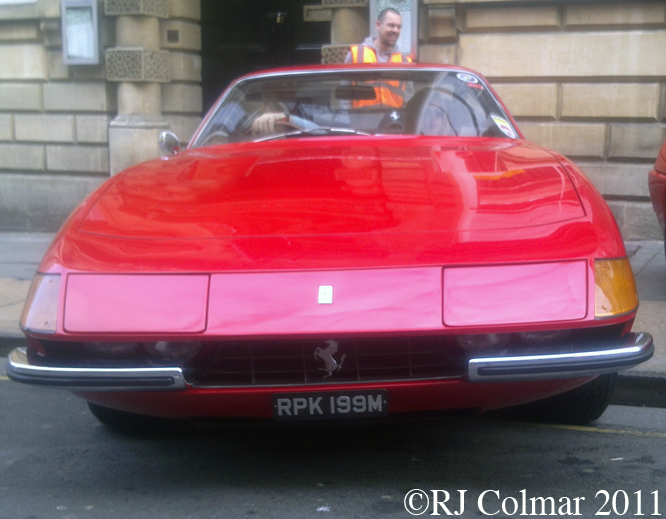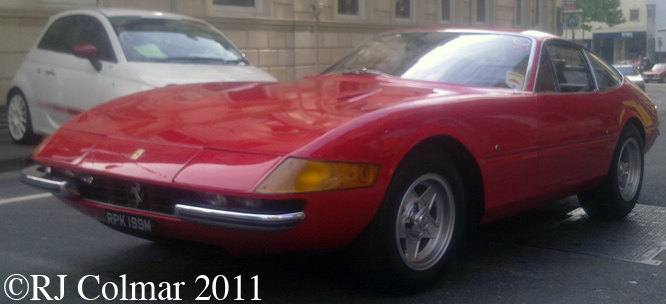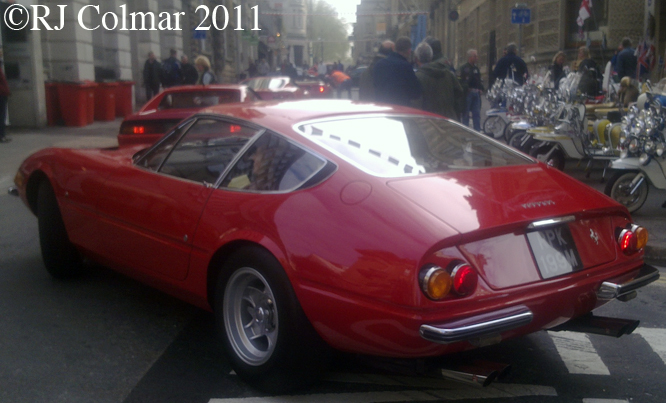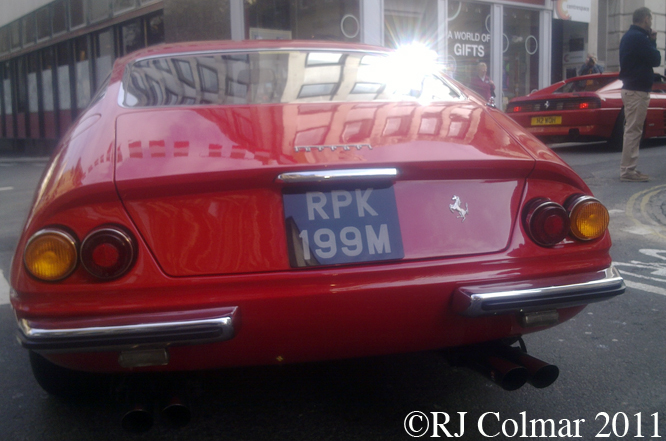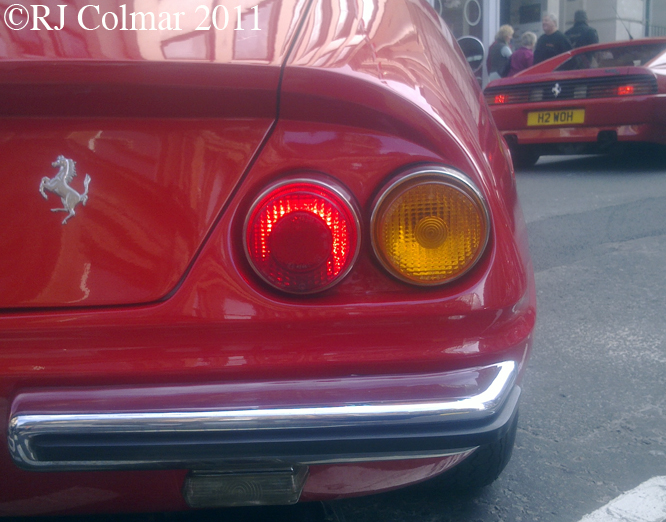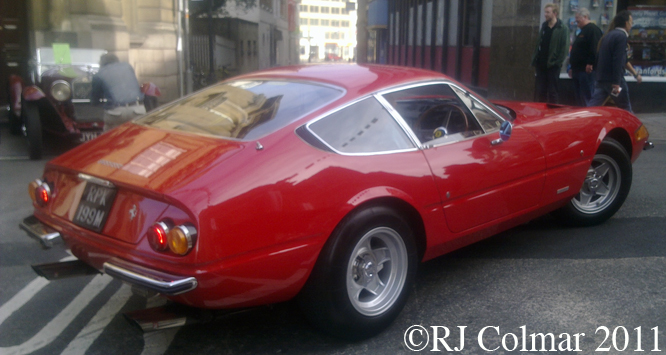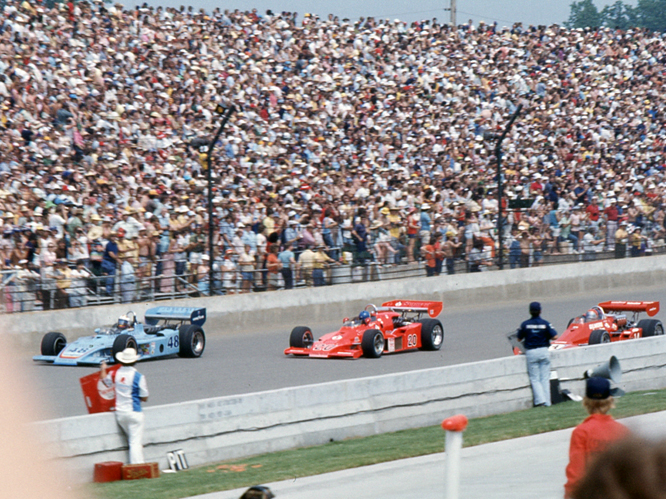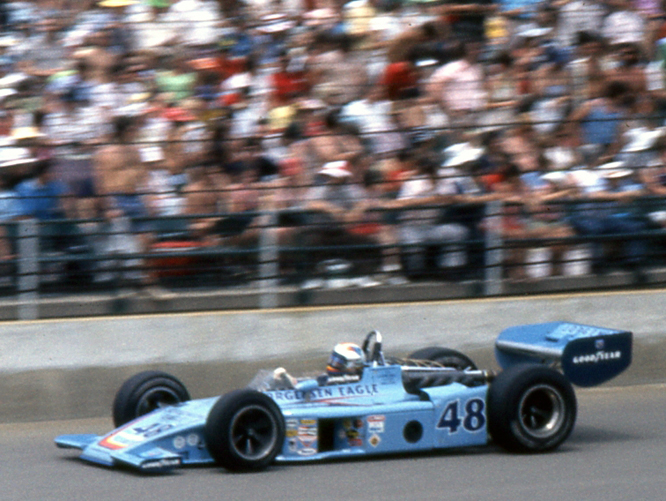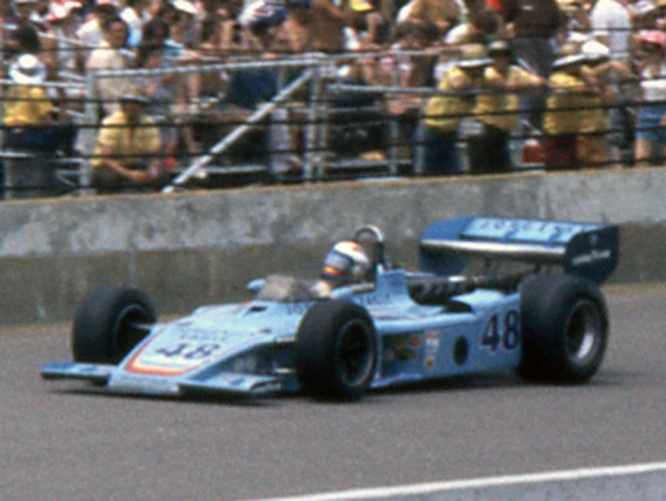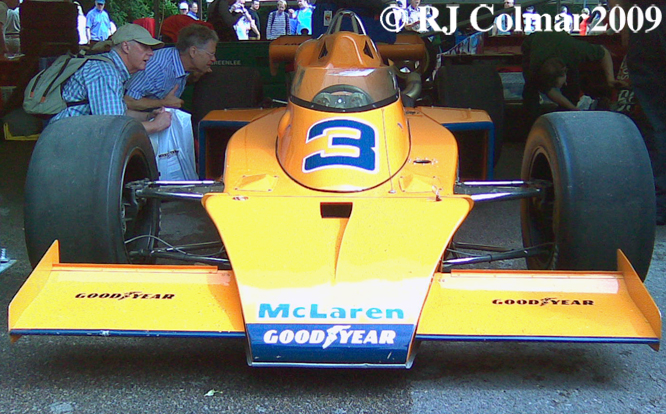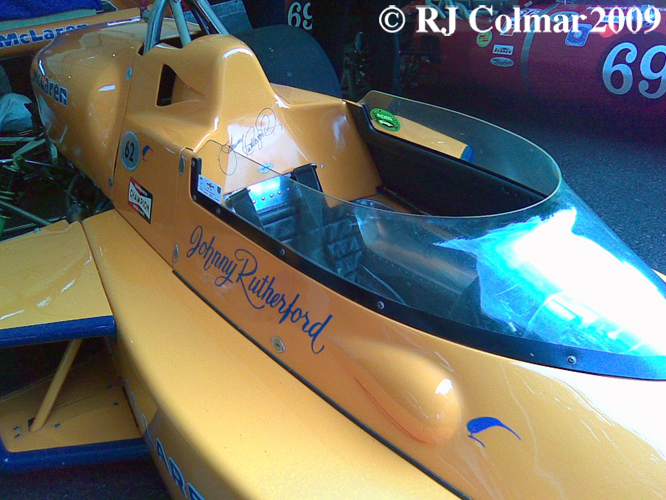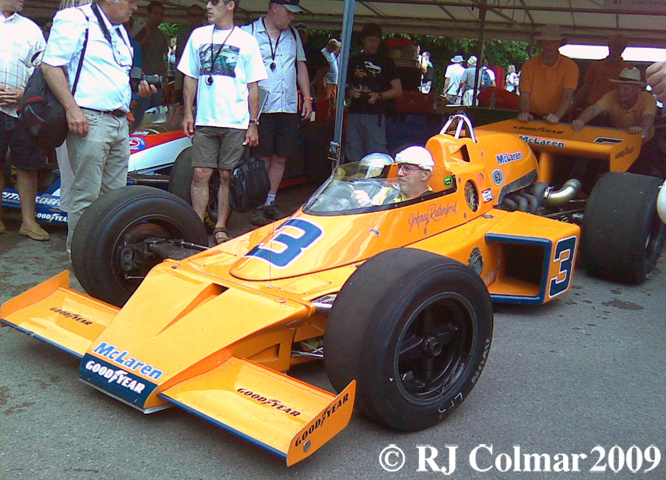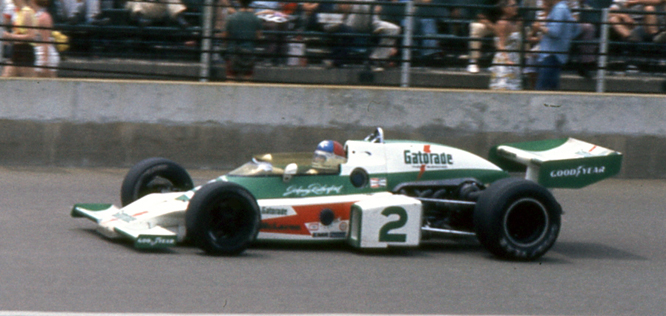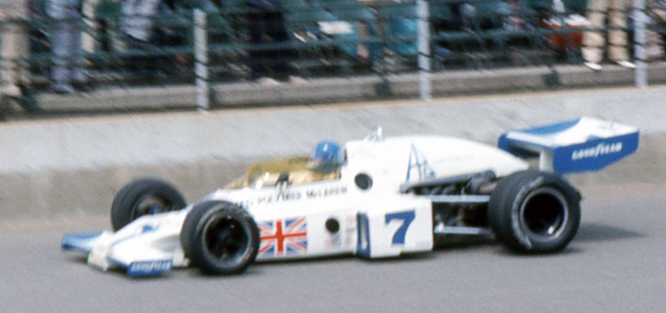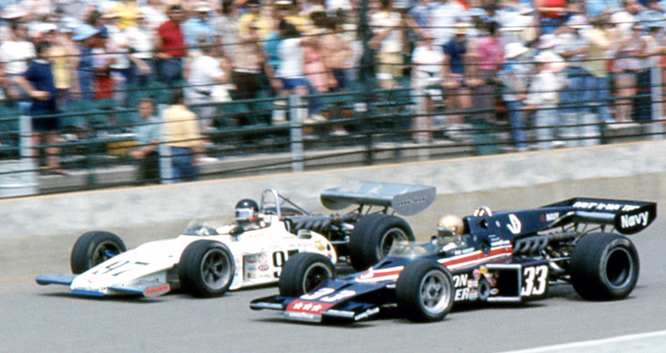The story behind Ueal Eugene ‘Pat’ Patricks Wildcat Indy cars allegedly begins with the Oil Crisis during the mid 70’s. The US Government desperate to secure it’s own oil supplies ran a programme designed to encourage exploration for oil reserves of which Pat Patrick’s ‘Patrick Petroleum’, a wildcat oil exploration company, was a beneficiary.
The rumour goes that Patrick used some of these ‘funds’ to finance the manufacture of racing cars called ‘Wildcats’ for his team that had won the 1973 Indianapolis 500 with Gordon Johncock driving an Eagle Offy. Allegedly Patricks racing car construction programme was a total write off billed as part of the expense of drilling for oil.
By 1982 the #20 Wildcat XIII designed by Gordon Kimball and Peter Gibbons won the Indy 500 driven again by Gordon Johncock. For 1983 Chip Ganassi, seen above in the #60 Sea Ray Boats Wildcat IX joined Gordon Johncock in the Patrick team.
Chip qualified a 16th and finished a career best 8th, from 5 Indy 500 starts, 5 laps down in the 1983 Indy 500, his CART career was interrupted by a crash in 1984 and he hung up his helmet 1986. By 1988 he purchased an interest in Patrick Racing and the following year they entered the #20 Penske PC 18 in the Indy 500 which Emerson Fittipaldi drove to Victory Lane at Indy in 1989.
For 1990 Chip went his own way starting his Champ Car team which won titles in 1996, with Jimmy Vasser, ’97 & ’98 with Alex Zanardi and ’99 with Juan Pablo Montoya, in 2000 Chip entered his first IRL race and won the Indy 500 with Indy Rookie JP Montoya.
Ganassi subsequently switched his open wheel team to the IRL and his drivers won the IRL Championship in 2003, ’08, 09 and ’10. Scott Dixon won the 2008 Indy 500 in a Ganassi entered car and Dario Franchitti repeated the feat last year.
Chip is also part of the Ganassi with Sabates NASCAR team currently running Juan Pablo Montoya and Jamie McMurray, the latter won the Daytona 500 and Brickyard 400 last year.
To round out his portfolio Chip Ganassi also runs a Grand Am team which won championship titles in 2004, ’08 and ’10 winning the prestige Rolex 24 Hours at Daytona Grand Am event in 2006, ’07, ’08 and ’11.
‘Pat’ Patrick wound up his team in 2000 though he did make a return in 2004 entering Al Unser Jnr in a hand full of races in the IRL until Al announced his retirement leaving Pat to sell his team.
My thanks to Steve Arnaudin for the scan of his Dad’s photo.
Slightly off topic, spare a thought for a brave woman Manal Al Sherif who has been arrested for committing the heinous crime of driving a car and encouraging other women to do the same, which under ‘religious’ laws is apparently illegal for all women in Saudi Arabia.
It is surely a bizarre circumstance when a country that produces so much oil, for the rest of the world to be driving around, should also be the ONLY country in the world which forbids women from driving ?
Please join me in showing your support for Manal Al Sherif on this facebook link.
Thanks for clicking on to today’s Wildcat edition of ‘Gettin’ a lil’ psycho on tyres’, I hope you will join me again tomorrow. Don’t forget to come back now !

